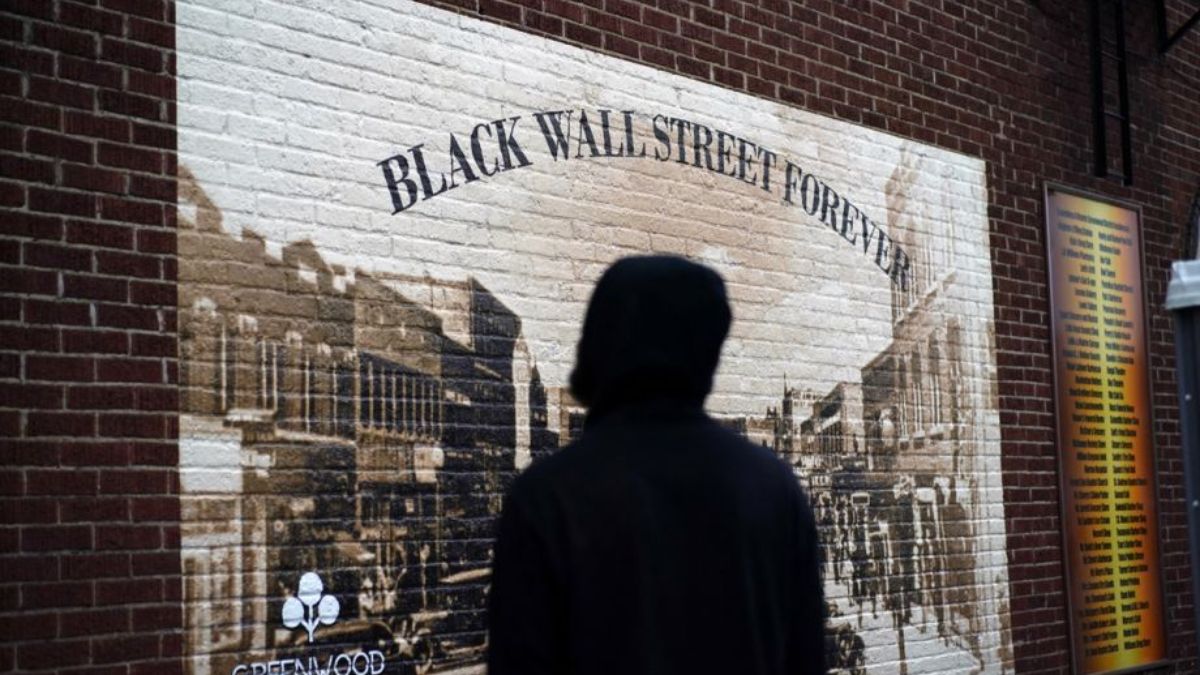 Credits: Next City
Credits: Next City
Advertisement
After more than a century of silence, the U.S. Department of Justice has launched a review and evaluation of the 1921 Tulsa Race Massacre, one of the deadliest episodes of racial violence in American history. Starting on May 31, 1921, white attackers descended on Tulsa’s prosperous Greenwood neighborhood, leaving as many as 300 Black residents dead and burning much of the district to the ground. This historic act of terror targeted what was known as “Black Wall Street,” a thriving African American community that had defied the oppressive racial climate of the early 20th century.
Tulsa’s Black Business heritage:
Greenwood, by 1921, was a fully realized haven for Black entrepreneurship and prosperity. It was home to roughly 10,000 residents and featured a flourishing business district centered on Greenwood Avenue. The area embodied Black resilience, offering opportunities to Black citizens just decades removed from enslavement. The neighborhood, separated from white Tulsa by railroad tracks, was a symbol of what Black America could achieve in the face of systemic racial injustice.
At the heart of Greenwood was the Marquee Block of Greenwood Avenue, the pulse of Black business in the city. More than 70 Black-owned businesses lined the street, operating from mostly one, two, and three-story red brick buildings. Here, residents could find everything from groceries and billiards to theaters and restaurants. Institutions like Williams Confectionery, The Tulsa Star newspaper, and the Stradford Hotel were symbols of Black excellence and ambition.
Loula and John Williams, for example, embodied the entrepreneurial spirit of Greenwood. Their confectionery and the East End Garage exemplified the drive to succeed despite the prevailing racial inequality. The couple also owned the 750-seat Williams Dreamland Theatre, which was the first movie house for Black citizens in Tulsa and a central gathering spot for the community.
But this burgeoning success was not met with celebration by all. Underlying the tensions that erupted into the 1921 massacre was deep resentment from white residents who saw Greenwood’s economic prosperity as a threat. When a young Black man was accused of assaulting a white woman, racial tensions boiled over, culminating in a furious mob of white looters and arsonists descending on Greenwood. Over the course of 24 hours, the district’s businesses and homes were obliterated, leaving the once-vibrant community in ashes.
Losses that Tulsa’s Black Business suffered:
The destruction went beyond the immediate loss of life and property. The financial toll was immense, with property loss claims totaling $1.8 million at the time — the equivalent of $27 million today. However, the full extent of the massacre’s impact is incalculable. Generational wealth, hard-earned through years of entrepreneurship and labor, was wiped out. The prosperity that could have been passed down to Black families for generations was erased in an instant.
Greenwood’s business community was particularly hard hit. Physicians like Dr. R.T. Bridgewater, who owned 17 rental homes and practiced in the Woods Building, saw their wealth and livelihoods destroyed. Mary E. Jones Parrish, a teacher and journalist, ran a typing school out of the same building that housed Mabel B. Little’s Little Rose Beauty Salon. Both women lost everything in the flames. Entrepreneurs like Buck Colbert Franklin, a lawyer who later provided legal services out of a tent after the massacre, were forced to rebuild from nothing.
The massacre did more than devastate individual lives, it destroyed the entire infrastructure of a self-sustaining Black community. Businesses like J.B. Stradford’s luxurious 54-room Stradford Hotel and the Dreamland Theatre, which once offered live shows and films to Black residents, were gone. Mount Zion Baptist Church, the city’s largest Black church, was reduced to rubble. Booker T. Washington School, which had just moved into a new three-story brick building in 1920, served as a hospital and relief center after the massacre.
Justice nearing for Tulsa’s Black Business:
Despite the scale of the devastation, the massacre was long buried in the annals of history. For decades, the story of Greenwood remained untold, and justice for its victims was elusive. Now, over 100 years later, the Department of Justice’s review seeks to shine a light on this dark chapter of American history and bring long-overdue accountability.
Greenwood was more than just a district; it was a city within a city. Black citizens of Tulsa lived a three-dimensional life, thriving in commerce, arts, and education. Greenwood’s residents held over 200 different jobs, from physicians and carpenters to grocers and restaurateurs. By 1921, it had grown into a 35-block neighborhood, home to schools, churches, and businesses — a model of what Black success could look like in America.
The U.S. Department of Justice’s renewed focus on the massacre comes at a time when the nation is reexamining its history of racial violence and systemic inequality. As the review proceeds, it serves as a reminder that the scars of Greenwood run deep — both in the physical destruction of the neighborhood and in the generational trauma carried by the descendants of its residents. It is a step toward recognition, accountability, and, perhaps, reconciliation for a century of silence.
